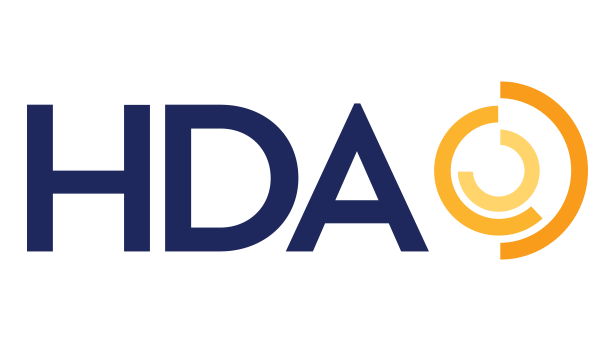The Pending NDC and Bar Code Rule: Distributor Perspectives
Part one of HDA’s series on the Food and Drug Administration’s (FDA) pending National Drug Code (NDC)1 and bar code rule explored manufacturers’ perspectives. Read more.
As discussed previously, the FDA has proposed an amendment to its NDC, and the final rule may be published as early as January 2024.
The extensive systems and process changes needed cannot be understated. Indeed, the NDC is used for countless processes among each segment of the supply chain — from manufacturers to distributors, dispensers or payors. It is believed that the total cost to wholesale distributors alone will exceed $100 million (and this figure does not include ongoing maintenance).
Examining Wholesale Distribution Industry Comments to the NDC Proposed Rule
Continuing our review of supply chain sector comments to FDA’s proposed rule, below is a summary of responses submitted by HDA and its wholesale distributor members. (Most member companies developed and submitted comments through HDA and GS1, and so, the following summarizes the industry’s collective feedback.)
- Coordination and Partnerships Required for Successful Implementation
Industry comments remind FDA that the proposed rule changes will require an extensive, coordinated effort from a vast array of both public-sector (at the federal and state levels) and private-sector healthcare entities. For example, an insurance claim Electronic Data Interchange (EDI) transaction from a provider with NDCs coded in 6-4-2 can’t be processed until the health insurer is ready to accept claims coded with that structure — the same would apply to transactions up the supply chain. Further, during the transition period, supply chain participants may have to process 10-, 11- and 12-digit NDCs simultaneously. Comments urged FDA to engage other healthcare-related agencies to identify all impacted sectors and agencies, develop timelines and identify general implementation tasks.
The long-standing partnership between HDA and GS1 is mentioned early in the comments, as the forthcoming implementation of the NDC and bar code rule changes signals another opportunity for the two to partner. Future blogs will further detail standards solutions GS1 is developing to address the NDC and bar code rule changes and the resulting standards implementation guidelines that HDA plans to publish.
- Expressing Feedback on Proposed Bar Code Formatting
Industry comments also examine the benefits of a numeric-only NDC, agreeing with FDA’s decision to reject the inclusion of letters into the labeler code to reduce the risk of medication errors. Concerns were also expressed that some IT systems may only permit numeric data to be housed in an NDC field. It is worth noting that dashes are not included in NDC numbers conveyed in EDI transactions and are implied for printing or computer user interfaces.
Further, the comments state support for both linear and non-linear bar code options. Scanning equipment will eventually need to be upgraded to image scanners that can read 2D bar coding to capture Drug Supply Chain Security Act (DSCSA) transaction information data. Therefore, it is likely that much of the healthcare supply chain will have this equipment by the end of the transition and delayed effect periods.
- Assessing Impact on Existing Systems
Using EDI X12 standards across various healthcare sectors was also examined, as the implementation of a new NDC format will require significant work to ready systems for the new format.
The vast use of NDC codes within EDI integration spans nearly every suite of EDI transactions throughout the healthcare supply chain, electronic health records, pharmacy benefit management and insurance. To update EDI standards to fit the proposed NDC codes, product or service qualifiers defining the new NDC format must be introduced and incorporated into EDI X12 and GS1 standards. Then, impacted entities can commence the process of updating EDI and bar code implementation guidelines.
Comments also review the inventorying of systems and processes impacted by the NDC change and subsequent modifications needed. Essentially, any systems referencing the NDC (and, of course, all DSCSA-compliant data capture and recording systems) will need attention. As noted earlier, the requirement to handle multiple NDC formats — potentially even for the same product — will present significant challenges.
- Sharing Concerns for Proposed Transition Period
Finally, industry comments raise concerns that the total eight-year transition period is insufficient. The rule’s preamble seems to advise manufacturers to simply start labeling products with new NDCs when they run out of old stock. Distributors requested the FDA specify by which date all product entering the supply chain must be labeled with new NDC numbers and provide clear guidance to the healthcare industry to assure a stable transition to the new NDC and bar code formats.
Read HDA’s comments for more information.
The next post in this series will look at the comments from the dispenser community of the healthcare sector impacted by the proposed NDC change.
Tim Stearns is HDA’s Senior Director, Industry Relations. He is focused on helping HDA members and industry stakeholders prepare for critical legislative mandates such as the NDC and DSCSA. For additional information or questions email tstearns@hda.org.
-------------------------------------------------------------------------------------------------------
1. For additional background, visit the FDA website.
